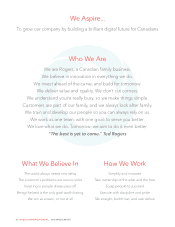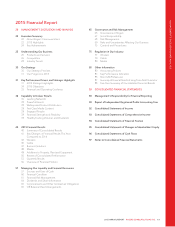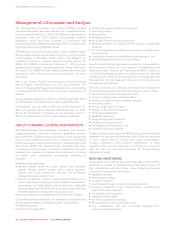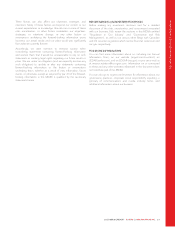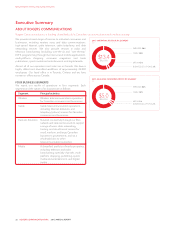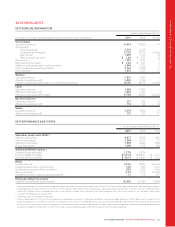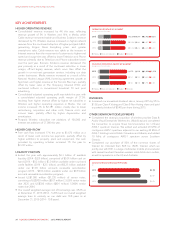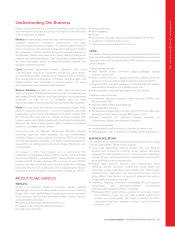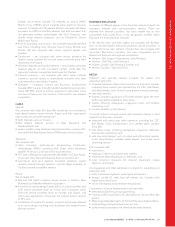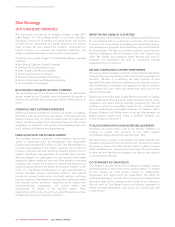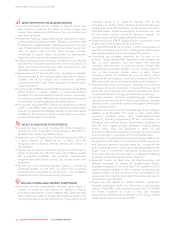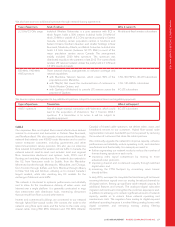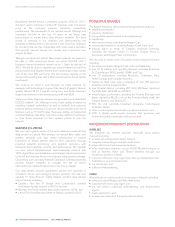Rogers 2015 Annual Report Download - page 30
Download and view the complete annual report
Please find page 30 of the 2015 Rogers annual report below. You can navigate through the pages in the report by either clicking on the pages listed below, or by using the keyword search tool below to find specific information within the annual report.MANAGEMENT’S DISCUSSION AND ANALYSIS
INDUSTRY TRENDS
The telecommunications industry in Canada and our business segments are affected by several overarching trends.
CHANGING TECHNOLOGIES AND CONSUMER DEMANDS
Consumer demand for mobile devices, digital media, and on-
demand content across multiple platforms is pushing providers to
build networks that can provide ever-increasing bandwidth
capacity. Increased adoption of smartphones and growth in our
data revenue continued this year, reflecting expanded use of
applications, mobile video, messaging, and other wireless data.
Wireless carriers have been upgrading their HSPA networks to
faster, higher-bandwidth LTE networks. Cable companies continue
to improve television broadcasting technology, for example with 4K
TV broadcasting capability.
Cable and wireline companies are shifting their networks towards
higher speed and capacity data over cable service interface
specifications (DOCSIS) 3.0/3.1 and fibre-to-the-home (FTTH)
technologies. These new technologies provide faster potential data
communication speeds, allowing both television and Internet
signals to reach consumers more quickly. Telecommunications
operators have also begun to roll out FTTH; however, these
deployments will be made to existing homes over several years.
ECONOMIC CONDITIONS
We are affected by general economic conditions and consumer
confidence and spending, especially in our Media segment, where
advertising revenue is directly affected by the strength of the
economy, and in our Business Solutions segment, where
businesses may delay significant capital purchases and business
services based on the strength of the economy.
REGULATION
Most areas of our business are highly regulated. These regulations
can affect the programming we can offer, where and how we use
our networks, how we build our businesses, the spectrum we can
purchase, the prices that we charge for certain services, and with
whom we compete. The wireless and cable segments of the
telecommunications industry are both being affected by increased
regulation and more reviews of the current regulations. See
“Regulation in Our Industry” for more information.
28 ROGERS COMMUNICATIONS INC. 2015 ANNUAL REPORT


